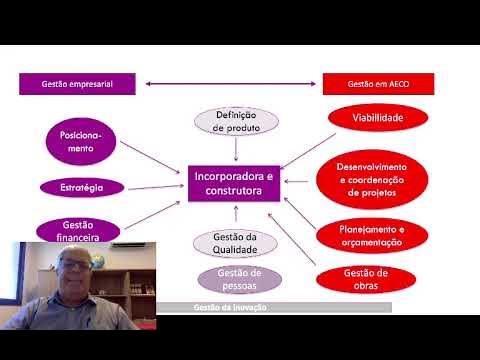Arquitectura_vs_Ingeniería_Civil
Summary
TLDRThis video explores the distinct yet complementary roles of architecture and civil engineering in construction projects. Architects focus on the creative and aesthetic aspects, designing functional and pleasing spaces, while civil engineers ensure structural integrity, safety, and adherence to building codes. The video emphasizes the importance of collaboration between these disciplines to achieve both functional and visually appealing structures. It also touches on the educational background and professional responsibilities of each, highlighting the historical interplay between architectural design and technological advancements.
Takeaways
- 🏛 Architecture is the art and science of designing aesthetically pleasing and functional structures, focusing on creativity, vision, design, aesthetics, functionality, sustainability, and environmental integration.
- 🔩 Civil engineering deals with the planning, design, construction, and maintenance of physical infrastructures like bridges, roads, buildings, dams, and water supply systems, emphasizing technical feasibility, durability, and safety.
- 🤝 Although architecture and civil engineering have different approaches, they complement each other and often work in collaboration on construction projects to combine creative vision with technical viability.
- 🎓 The educational background of architects includes theoretical and practical studies in design, art history, building materials, and technology, while civil engineers focus on mathematics, material resistance, physics, and specialized engineering courses.
- 👷♂️ In construction projects, architects typically initiate with preliminary research, conceptual ideas, and sketches, developing architectural plans, while civil engineers collaborate closely to evaluate structural feasibility and perform structural calculations.
- 🏗 In Peru, the supervision of construction work can be carried out by either architects or civil engineers, with the resident having at least two years of experience in the specialty relevant to the project's nature and complexity.
- 🏙️ Architects play a more prominent role in the design and conceptualization phase of a project, working closely with clients to understand their needs and translate them into attractive and functional designs.
- 📏 Civil engineers ensure that buildings are structurally sound by calculating loads and forces, and designing necessary support elements, thus providing the backbone of the structure.
- 🏗 Historically, architecture and structure have been intimately linked, with technological advancements in materials and construction methods enabling the development of architectural expression.
- 🌐 Both disciplines are not in competition but are complementary, working together to bring life to building projects, highlighting the importance of collaboration over rivalry.
Q & A
What is the primary focus of architecture?
-Architecture focuses on the art and science of designing and constructing aesthetically pleasing and functional structures. Architects prioritize creativity, vision, and the needs of the users to create habitable spaces that are integrated with the environment.
How does civil engineering differ from architecture?
-Civil engineering is concerned with the planning, design, construction, and maintenance of physical infrastructures such as bridges, roads, buildings, dams, and water supply systems. Civil engineers focus on technical feasibility, durability, and safety of projects, using scientific and mathematical principles to ensure structures are stable and meet construction codes and standards.
What are the key skills required for an architect?
-Architects need to be creative, have artistic vision, and excellent design skills. They must understand the needs of end-users and translate them into aesthetically pleasing and habitable spaces.
What expertise do civil engineers possess that is crucial for their work?
-Civil engineers must be experts in mathematics, physics, and applied sciences. Their focus is on functionality, structural stability, and the safety of constructions.
How do architecture and civil engineering collaborate in construction projects?
-Architecture and civil engineering collaborate by combining creative vision with technical feasibility. Architects and civil engineers work together to ensure that buildings and structures are both functional and aesthetically attractive.
What is the educational background typically required for architects?
-Architects have a background that includes theoretical and practical studies in design, art history, building materials, and technology.
What kind of courses do civil engineers focus on during their education?
-Civil engineers focus on mathematics, material resistance, physics, and specialized courses in structural engineering, hydraulic engineering, and geotechnical engineering.
Can architects and civil engineers perform construction supervision in Peru?
-In Peru, construction supervision can be carried out by architects or civil engineers, provided they have at least two years of experience in their specialty, depending on the nature, scale, and complexity of the work.
What is the role of architects in the design and conceptualization phase of a project?
-Architects play a prominent role in the design and conceptualization phase of a project. They work closely with clients to understand their needs and translate them into attractive and functional designs.
How does the historical development of technology influence architecture?
-The development of technology has been intimately linked with architecture throughout history. As technology advanced, it allowed for the use of better materials and construction systems, which in turn enabled the development of architectural expression.
What is the relationship between architectural design and the advancement in material technology?
-Architectural design motivates the study and advancement in material technology and new calculation methods. When these advancements are achieved, they allow for a more successful architectural expression.
Outlines

Этот раздел доступен только подписчикам платных тарифов. Пожалуйста, перейдите на платный тариф для доступа.
Перейти на платный тарифMindmap

Этот раздел доступен только подписчикам платных тарифов. Пожалуйста, перейдите на платный тариф для доступа.
Перейти на платный тарифKeywords

Этот раздел доступен только подписчикам платных тарифов. Пожалуйста, перейдите на платный тариф для доступа.
Перейти на платный тарифHighlights

Этот раздел доступен только подписчикам платных тарифов. Пожалуйста, перейдите на платный тариф для доступа.
Перейти на платный тарифTranscripts

Этот раздел доступен только подписчикам платных тарифов. Пожалуйста, перейдите на платный тариф для доступа.
Перейти на платный тариф5.0 / 5 (0 votes)






